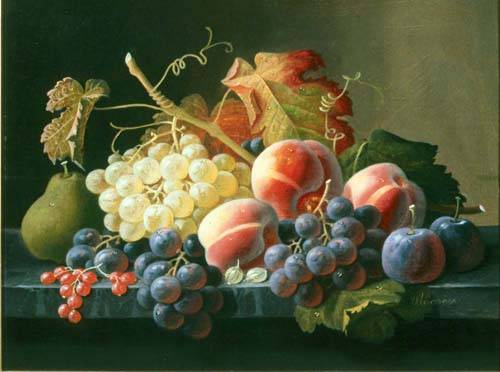Little is known about Severin Roesen, though his paintings are well recognized for their 19th century popularity and wide use as “dining room pictures.” Born in Germany around 1815, Roesen likely trained as a porcelain or enamel painter. In 1848, he emigrated to New York and immediately offered his paintings for view at the American Art Union.
Read More
While still lifes had a tradition in American art, Roesen’s works achieved a new height of popularity and were quickly purchased by New York households for display. It is speculated he ran a workshop while in New York to keep up with demand and has been credited with the creation of over 300 paintings during his lifetime.
In 1857, Roesen abandoned his wife and children to move to Philadelphia and subsequently several other German-American communities, eventually landing in Williamsport, a prosperous logging town. The Williamsport Sun and Banner reported in 1895 that: “His [Roesen’s] studio was much frequented by his friends, who would sit all day with this genial, well-read and generous companion, smoking his pipes and drinking his beer, and he was seldom without this beverage. . . . In one corner of the finished painting would always appear the faint outline of a beer glass, and when a customer objected to its presence, he would say, 'Why, do you not like beer?' and then take it out.” It is thought Roesen may have traded paintings for lodging and beer, as hotelier and brewer Jacob Flock was found to own more than fifty of the artist’s paintings. In 1872, Roesen disappeared, leaving a mystery as to his destination and ultimate end. He was rumored to have died on the steps of a public building in New York or in a poorhouse in Philadelphia.
